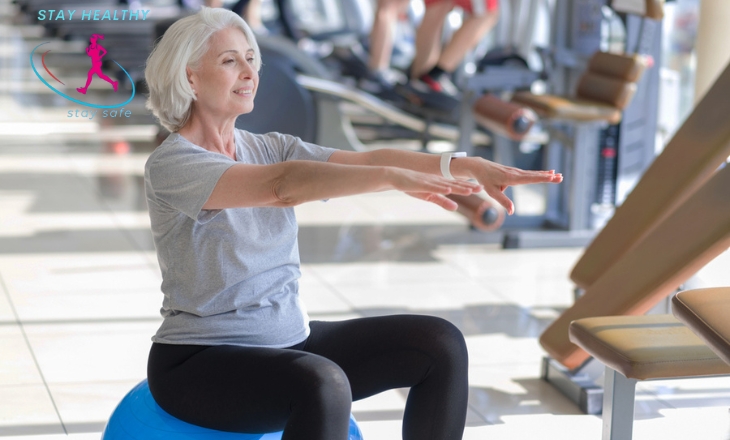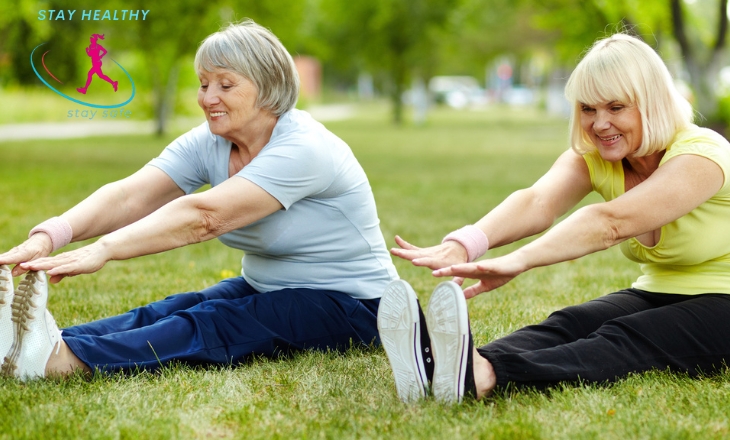Osteoporosis, a condition characterized by weakened and brittle bones, can benefit from regular exercise.Routinely exercising can enhance bone density, reduce the risk of fractures, and promote overall strength and balance.
Let’s dive into the world of best exercises for osteoporosis as a powerful tool in treating osteoporosis and reclaiming control over your bone health journey.

How does exercise prevent osteoporosis?
Engaging yourself in regular exercise plays a crucial role in preventing osteoporosis by helping to strengthen bones and reduce the risk of fractures.The best exercises for osteoporosis walking, jogging, and dancing are particularly beneficial for improving bone density and overall bone health. These activities help stimulate the production of new bone tissue, making bones stronger and less prone to fractures.
The resistance training can also be effective in preventing osteoporosis by building muscle mass and enhancing bone strength.Recommended activities like lifting weights or using resistance bands into your workout routine. Balance exercises such as tai chi or yoga can help improve stability and coordination, reducing the risk of falls that may lead to bone fractures in individuals with osteoporosis.

What are the best exercises for osteoporosis?
For individuals with osteoporosis, low-impact exercises play a crucial role in maintaining bone health. Activities like walking, swimming, and yoga are gentle on the joints while improving balance and flexibility.
Also the low-impact workouts, strength training are highly beneficial for preventing osteoporosis-related bone loss. Weight-bearing exercises such as lifting light weights or using resistance bands can increase bone density and reduce the risk of fractures.
The best type of exercise for osteoporosis that the doctors and fitness trainer recommended are listed below .
Progressive resistance training
Progressive resistance training stands out as one of the best exercises for individuals with osteoporosis due to its ability to effectively increase bone density and strength. This type of training involves gradually increasing the resistance or weight over time, which helps stimulate bone remodeling and improve bone health.
Resistance training benefits for osteoporosis typically include a variety of progressive resistance exercises, such as weightlifting, resistance band workouts, and bodyweight exercises like squats and lunges. These customized workout plans not only help improve bone density but also enhance overall muscle strength and balance, reducing the risk of falls and fractures in individuals with osteoporosis.

High-velocity power training
High-velocity power training has emerged as a promising approach to combat osteoporosis due to its unique ability to improve bone density and strength rapidly. By these explosive movements you can stimulate bone growth and prevent the deterioration of bone mass associated with osteoporosis. These high-impact exercises are particularly effective in targeting areas prone to fractures, such as the hips and spine.
The flexibility routines also play a crucial role in maintaining strong bones and reducing the risk of fractures. Stretching exercises help enhance joint mobility, improve posture, and increase overall flexibility, which are essential components of bone health.

Aerobic movements
Aerobic movements such as jogging, dancing, or cycling are often hailed as the best exercises for osteoporosis due to their ability to strengthen bones. These high-impact activities stimulate bone growth and help improve bone density, reducing the risk of fractures. The core strengthening workouts can also enhance bone health by supporting your spine and improving balance.
Engaging in regular aerobic movement not only benefits your bones but also contributes to overall physical wellbeing. A study published in the Journal of Bone and Mineral Research found that post menopausal women who participated in high-impact aerobics experienced significant improvements in bone health compared to those who did low-impact exercise.

Climbing and gardening
When it comes to combating osteoporosis, stair climbing and gardening can be incredible exercises that offer a range of benefits for bone health. Stair climbing is a great aerobic exercise that not only strengthens the legs and core but also helps in improving balance and coordination.
Gardening, on the other hand, provides a unique combination of physical activity and mental relaxation. Tasks like digging, lifting pots, or planting require using different muscle groups which can help improve bone density. Some other movements like squatting for weeding or reaching overhead while pruning can mimic exercises like lunges or the superman exercise which are beneficial for building strength.

Impact exercises
Impact exercises are often touted as the best option for improving bone density in individuals with osteoporosis. These high-impact activities, such as jumping, running, and hiking, stimulate the bones to build strength and prevent fractures.
For those with joint issues or limited mobility, impact-free fitness options can be just as effective in promoting bone health.
Low Impact exercise
Low-impact exercises like swimming, cycling, and elliptical training provide a gentler alternative that still offers significant benefits for osteoporosis patients.
High Impact exercise
High-impact exercises may seem like the go-to choice for preventing fractures in individuals with osteoporosis, it is essential to consider the long-term impact on joint health. Joint-friendly exercises that focus on improving balance and stability can also help reduce the risk of falls and subsequent fractures.

What exercises should you avoid if you have osteoporosis?
When dealing with osteoporosis, it’s important to avoid high-impact exercises such as running or jumping, as they can increase the risk of fractures. Instead, focus on low-impact activities like walking, swimming, or cycling. These exercises help build bone strength without putting too much strain on your bones.
Functional movements that support bone health include weight-bearing exercises like lifting weights or using resistance bands. These activities are recommended by doctors for improving bone density and reducing the risk of fractures in individuals with osteoporosis.
Conclusion
In conclusion , you should make a routine of weight-bearing exercises, resistance training, and balance exercises that can help strengthen bones and reduce the risk of fractures.Activities such as walking, dancing, and weightlifting are excellent choices to improve bone density and overall physical health.
Remember to consult with a healthcare professional before starting any new exercise program, especially if you have osteoporosis. By consistently engaging in these recommended types of exercise, you can enhance your bone strength and maintain better mobility as you age. Start taking care of your bones today by choosing the best exercises for osteoporosis.
FAQs
What are the best exercise machines for osteoporosis?
For osteoporosis, the best exercise machines are those that help improve bone density and strength. Weight-bearing exercises are especially beneficial for strengthening bones, so machines like treadmills, ellipticals, and stair climbers are great choices. These machines provide impact and resistance that can help build bone mass.The strength training machines such as leg press, chest press, and rowing machines can also be effective in improving bone health.
What is the exercise for a better bone osteoporosis exercise program?
For better bones and to manage osteoporosis, it’s important to include weight-bearing exercises in your workout routine. These exercises help strengthen the bones and improve bone density. Some examples of weight-bearing exercises include walking, jogging, dancing, and stair climbing.weight-bearing exercises are also beneficial to incorporate resistance training into your exercise program. This can include using weights or resistance bands to build muscle strength and support bone health..
What exercise is prescribed for people with osteoporosis?
To stay healthy, adults should aim for 150 minutes of moderate exercise each week, or 75 minutes of vigorous exercise, along with some muscle strengthening twice a week.
What type of walking is best for osteoporosis?
For osteoporosis, weight-bearing and resistance exercises are the best types of walking. Weight-bearing exercises help to strengthen bones and improve bone density, which is important for managing osteoporosis. This includes activities like brisk walking, hiking, or stair climbing. You can do this by using light hand weights or resistance bands while walking to add an extra challenge to your workout.
What is the best and safest treatment for osteoporosis?
The best and safest treatment for osteoporosis often depends on the individual’s specific situation. In general, a combination of lifestyle changes, such as regular exercise and a healthy diet rich in calcium and vitamin D, is recommended to help strengthen bones and prevent further bone loss.The medications like bisphosphonates, denosumab, or hormone therapy may be prescribed by a healthcare provider to help increase bone density and reduce the risk of fractures.
